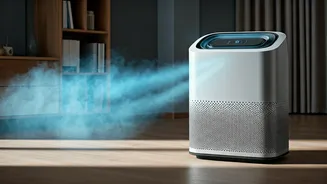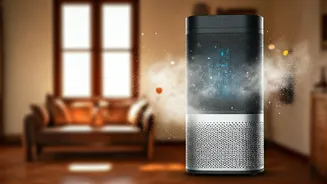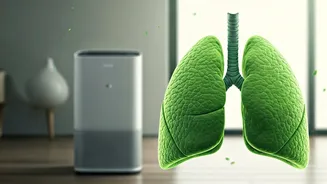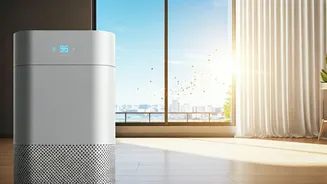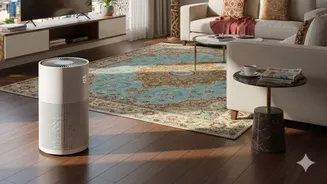Room Size Matters
One of the most critical factors in selecting an air purifier is the size of the room you intend to clean. Air purifiers have a Clean Air Delivery Rate
(CADR), which indicates the volume of air they can filter in a given timeframe, typically measured in cubic feet per minute (CFM). When looking for an air purifier, determine the square footage of the room and match it with the purifier's CADR rating. If the room is larger than the purifier's capacity, the air won't be cleaned effectively. Moreover, consider factors like the room's layout and whether it has open doorways. Open floor plans necessitate purifiers with higher CADR values because the air needs to be circulated throughout a broader area. A higher CADR rating is always preferable, as it provides more efficient air cleaning.
Type of Filters
Air purifiers use various types of filters, each designed to capture different pollutants. The most common is the HEPA (High-Efficiency Particulate Air) filter, which is incredibly effective at trapping small particles, like dust, pollen, and even some viruses. Another popular option is activated carbon filters, used to absorb odors, gases, and volatile organic compounds (VOCs) that can come from things like cleaning products or new furniture. Some air purifiers also have pre-filters, which capture larger particles like pet hair and dust, extending the life of the other filters. When choosing, consider the specific pollutants you're most concerned about. If you suffer from allergies, a HEPA filter is a must. If you live in an area with high levels of pollution from vehicles or industry, an activated carbon filter will be beneficial. Some air purifiers combine multiple filters for the most comprehensive air purification experience. It's important to also know the lifespan of the filters and how often they should be replaced.
Noise Matters
The noise level of an air purifier is another crucial consideration, especially if you plan to use it in your bedroom or workspace. Air purifiers generate noise because of the fan that draws air through the filters. The noise level is measured in decibels (dB). Look for models with a low noise level, particularly when operating on their lowest setting. Some air purifiers have a 'sleep mode' or 'night mode' that reduces fan speed and noise, allowing you to sleep peacefully. Pay attention to how the noise is distributed across the different fan speeds. A purifier might be quiet on its lowest setting, but become considerably louder at higher speeds. Read reviews and look for information about the purifier's noise levels under different operating conditions. If you're sensitive to noise, it is useful to choose a model with multiple speed settings to have more control over the noise.
Check Performance Measures
Beyond the CADR rating, there are other performance measures to consider. Many air purifiers have built-in sensors that monitor air quality and adjust the fan speed automatically. These sensors can detect pollutants like PM2.5 (fine particulate matter) and volatile organic compounds (VOCs). Some models provide real-time air quality readings via an app or display. This information can help you understand the impact of the purifier and ensure it's operating effectively. Consider features like the energy efficiency of the unit. Look for air purifiers that are Energy Star certified, as they use less electricity. The cost of filter replacements is also something to take into account. Calculate the average life of the filters and consider the expense of replacing them. Some manufacturers will also include a timer, which will alert you when to replace the filter.
Filters Are Vital
The effectiveness of an air purifier largely depends on the maintenance and care of its filters. Filters need to be replaced periodically, and the frequency of replacement varies depending on the type of filter and the air quality in your area. HEPA filters typically last for 6-12 months. Activated carbon filters might need to be replaced more frequently, depending on how much odor and gas they're absorbing. Regularly check the air purifier's manual for guidance on how often to replace the filters. Ignoring filter replacement can lead to reduced air purification performance. Some air purifiers have filter replacement indicators that alert you when it's time to change them. Keep the air purifier’s intake and exhaust vents clear, as this ensures that the air flow is not impeded. By changing the filters regularly, you can ensure that your air purifier is consistently removing pollutants from your home.
